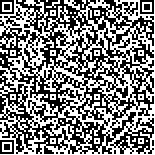下载中心
优秀审稿专家
优秀论文
相关链接
摘要

SAR图像变化检测是遥感震害信息识别中的重要方法之一,常规的SAR图像变化检测方法主要以强度图像为主,易受图像中地物目标方位变化、表面粗糙度变化和图像中涵盖地物目标信息量庞大的影响。针对震后强度图像变化复杂无规律、纹理特征参数繁多且难优选的问题,以熊本地震益城町区域的ALOS-2数据为例,提出了一种基于纹理特征主成分变换的相关性变化检测方法,该方法首先提取图像的多个纹理特征参量,其次采用主成分变换的方法获取多个纹理特征参量的第一主成分分量,然后计算第一主成分分量的相关性,最后根据实地调查样本统计分类阈值对图像中不同程度震害建筑物进行检测,并与基于强度图像相关性变化检测方法、强度图像差值变化检测方法结果进行了对比。结果表明,基于纹理特征主成分的相关性变化检测方法能够有效地检测不同震害程度建筑物的分布,总体提取精度可达87.2%,高于基于强度图像的两类变化检测方法检测精度,在保持较高提取精度的同时,也有效降低了震害建筑物的错分概率,证明了该方法的可行性,提出的方法可用于震后灾损评估、救援决策制定、指导灾后重建。
An earthquake is a sudden natural disaster that results in the great loss of human lives and the compromised safety of properties. Rapid assessment of building damage after an earthquake is crucial for earthquake emergency rescue and damage assessment. Synthetic Aperture Radar (SAR) is an effective earthquake disaster analysis and evaluation method with a unique ability to overcome the impact of bad weather after an earthquake. Change detection based on SAR images is one of the important methods for remote sensing seismic information recognition.
The conventional SAR image change detection method is mainly based on intensity images. Damaged buildings after an earthquake have complex and diverse forms, and no regularity exists in the intensity image. Therefore, capturing all the change information in the image under the set standard is difficult. However, the change in texture features is stable and cannot be affected easily by a change in ground features. Therefore, the inclusion of texture features in the calculation can completely obtain the change information of the image. Many parameters can describe texture features. If all the features are used, then the complexity of the algorithm is increased, and the feature information becomes redundant, thus reducing the accuracy of information recognition.
To address irregular changes in intensity images after an earthquake and the numerous and difficult-to-optimize texture feature parameters, we propose a correlation change detection method based on principal component analysis of texture features. Principal component analysis is used to fuse multi-texture information based on the analysis of image texture features to avoid redundancy of features. Then, the window size is set to calculate the correlation between the extracted principal component components, and the correlation classification threshold is set for the detection of seismic building information. The process is mainly divided into four steps: (1) texture feature analysis; (2) principal component analysis; (3) correlation analysis; and (4) threshold setting and classification.
The study considers Mashiki, which is the area that was most seriously damaged by the Kumamoto earthquake, as the study area. ALOS-2 SAR image data are used to verify the effectiveness of the proposed method, and the results are compared with those of the correlation change detection method on the basis of intensity image and with those of the difference change detection method on the basis of intensity image. Results show that the proposed method can efficiently extract buildings with different damage levels with an overall extraction accuracy that reaches 87.2%. The overall extraction accuracy is higher than that of the two change detection methods based on intensity images. The method not only obtains high extraction precision but also reduces misclassification probability.
Principal component analysis can cover the useful information in the features and avoid the redundancy of features effectively. The change detection method based on SAR image texture feature can distinguish the intact and the destroyed buildings effectively. The proposed method can be used for allocating earthquake emergency rescue forces, damage assessment, and reconstruction.

